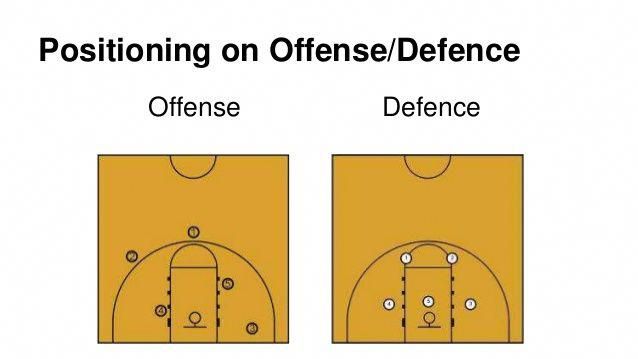Home »
Misc »
How to improve offense in basketball
How to improve offense in basketball
Tips To Improve Your Offensive Game
Tips To Improve Your Offensive Game
In order to be an effective offensive player at any level, you must have a firm grasp on a couple incredibly important traits. They might not always be flashy or popular things, which often means it goes overlooked, but they are absolute fundamentals for any aspiring athlete. No matter how big, fast, or strong you are, you won’t be able to out run, dunk, and dribble everybody and these details will help you build an overall more well-rounded game.
Take CoachUp’s tips with you to practices and games from here on out, you’ll most definitely see an improvement in your game over time. For most situations and scenarios, it isn’t the flashiest or the strongest player that gets the most playing time, but instead the most fundamentally sound. Remember, you can always get better!
Practice Your Shot
Work with your shooting form, starting with your feet to get a firm foundation.![]() Learn to shoot with your fingertips and get good rotation on your shot. No matter your age, ‘shoot’ the basketball and don’t just chuck it or aim! Practice, practice, practice — the more it’s reactionary and instinctual than purposeful math, the better.
Learn to shoot with your fingertips and get good rotation on your shot. No matter your age, ‘shoot’ the basketball and don’t just chuck it or aim! Practice, practice, practice — the more it’s reactionary and instinctual than purposeful math, the better.
To perfect your shooting technique, practice shots within just a few feet of the basket, then gradually increase your distance from the basket to the wing, to the elbow, etc. Practice lay-ups with proper form from both sides of the basket as well. Don’t forget about free-throws, either! In games and practice, don’t be afraid to look for shooting opportunities, but don’t force bad shots.
(Related: Read about improving your shot here.)
Become A Good Dribbler + Ball-Handler
Dribbling and ball-handling are fundamental skills for almost any offensive move with the ball. Practice dribbling drills and moves for at least fifteen minutes every day.
(Related: Read about your ball-handling skills here.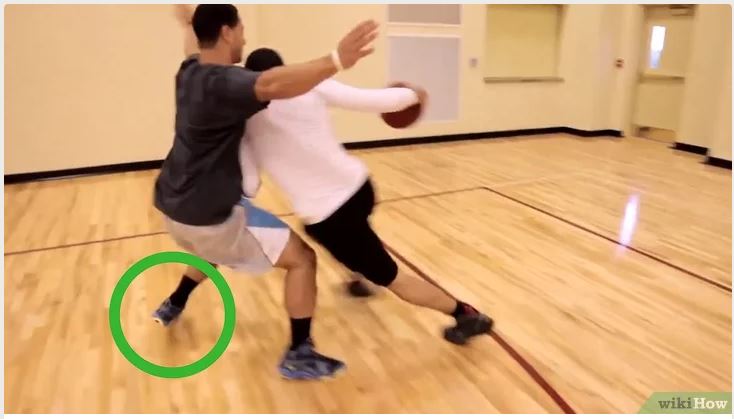 )
)
Learn the Triple-Threat Position
The triple-threat position is so incredibly important for keeping your defender on their toes. A viable triple-threat will have you pivoting to face your defender to have the option of shooting, passing or dribbling. You control the defender, so don’t limit your options by holding the ball in just one spot.
Be A Good Passer
Bad passing and turnovers will destroy a team faster than anything absolutely anything else. Make crisp bounce passes as they are harder to intercept. Avoid long cross-court passes unless your teammate is wide open and it fits your offensive scheme. Give your teammate a good pass so they can easily catch and transition into the triple-threat position.
(Related: Read about the point guard position and their responsibilities here.)
Court Awareness
The keys to better court awareness can be broken down to three main points! Always know where the ball is, keep your head on a swivel, and never, ever turn your back on the ball.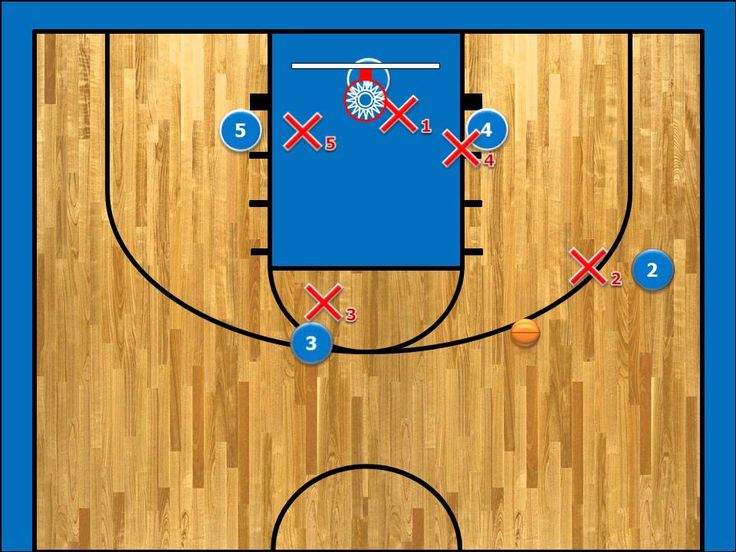 This means paying attention at all times, staying weary of back-door cuts, possible passes, or broken plays to take advantage of. Learn find an open areas on the floor for easy, high-percentage shots.
This means paying attention at all times, staying weary of back-door cuts, possible passes, or broken plays to take advantage of. Learn find an open areas on the floor for easy, high-percentage shots.
Go Hard For The Offensive Rebound
Many easy baskets are scored on second and third chances, so stay at it no matter what. Get in the habit of following your own shot as well. Many times, if your shot is too short or hard, it will come off the rim right back towards you. Depending on the style of play your team has, you may attack rebounds more often than others, but weak side rebounds are often there for the taking. Again, you might be surprised to find out that those hard-working players will find the floor more often than those more technically skilled.
(Related: Read about becoming a beast on the glass here.)
Get The Ball Down The Floor Quickly
Fast-break whenever possible to beat the defense down the court, but play under control at all times.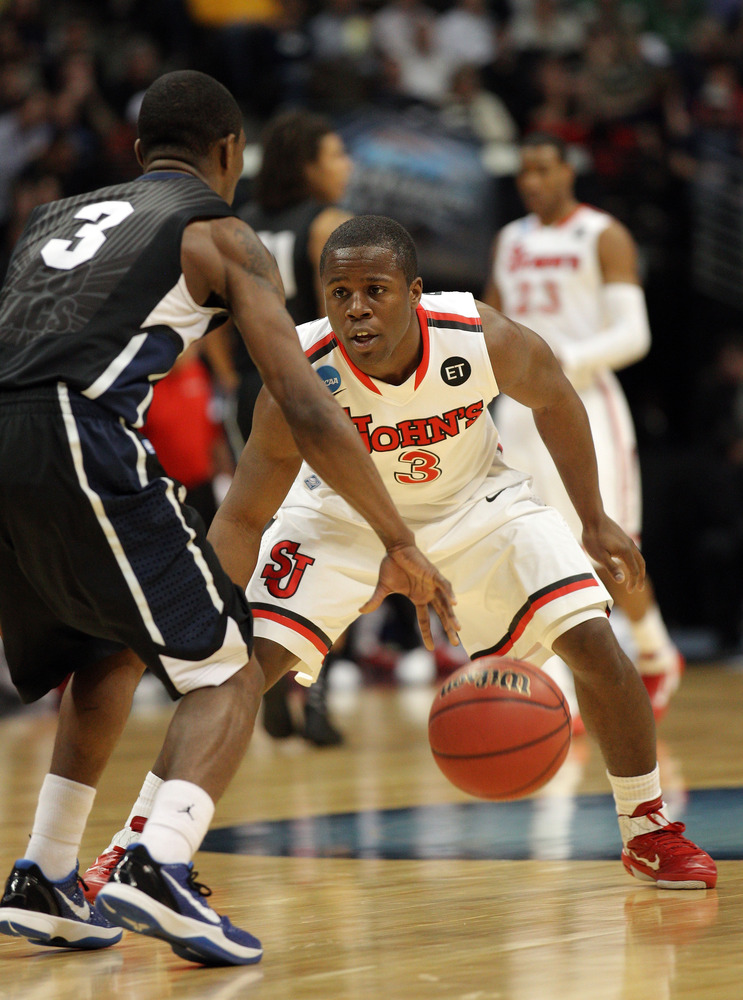 At all costs, avoid turning the ball over! Obviously, you can’t score if you don’t have the ball, so don’t be afraid to slow it down and get into your half-court set if that feels more appropriate. Remember, you must be quick, but never hurry.
At all costs, avoid turning the ball over! Obviously, you can’t score if you don’t have the ball, so don’t be afraid to slow it down and get into your half-court set if that feels more appropriate. Remember, you must be quick, but never hurry.
(Related: Read about running the fast break here.)
Avoid Too Much Dribbling
Too much dribbling allows the defense time to reset — quick passing and cutting is the key to smooth offensive basketball. When you receive a pass, consider not immediately dribbling, but instead going into the triple threat — it will make you a much more tougher assignment. Coach John Wooden told his players to end their dribble with either a pass or a shot — which may seem odd, but it’s actually incredibly sound advice. Don’t stop your dribble until you can do either of those things.
(Related: Read about improving your weak hand here.)
Move Without The Ball
Don’t stand still, set picks, make cuts through the paint, and go back-door on your defender. Too often, teams will play a very ball-dominant player and, typically, his teammates will end up watching him more than they’ll play. The style of offense you run may dictate some of this, but you should never stay in one spot on the floor for more than a couple of seconds because it allows the defense to guard you with little effort.
Too often, teams will play a very ball-dominant player and, typically, his teammates will end up watching him more than they’ll play. The style of offense you run may dictate some of this, but you should never stay in one spot on the floor for more than a couple of seconds because it allows the defense to guard you with little effort.
(Related: Read about moving without the ball here.)
Huddle Up
In the end, these aren’t every trait that you need to focus on during your training — no, in fact, this is just an incredibly small sampling. But, we’ve given you a couple ideas for each to build off of — if you find yourself further interested, check out the related reads under each section. Those specific articles will go into deeper detail than we’ve done here, so we strongly recommend checking those out.
However, if you’re still struggling with some of this, consider booking one of CoachUp’s private trainers to help you out. Our team’s advanced knowledge and expertise will help you get out of any bind, drama, and last-second situation with confidence — so what are you waiting for?
How useful was this post?
Click on a star to rate it!
Average rating 4. 4 / 5. Vote count: 27
4 / 5. Vote count: 27
No votes so far! Be the first to rate this post.
How to Improve Basketball Moves and Individual Offense
By Don Kelbick
Individual offense is often called one-on-one basketball
moves. I prefer to call it individual offense due to the fact that basketball
is a team game. In teaching players individual basketball moves, often the
wrong message can be sent. Players get mixed messages when they come to
practice after a summer of working on individual skills and we ask them to
integrate those skills into a team concept.
Do we just teach the skills or do we want them to learn the
mentality as well? Terminology and
context that we use to teach can put things into perspective. We like fancy
names for drills and the things we come up with, but on this subject,
simplicity might be the best way to present it. How about calling this section,
"Here are the things you can do to score when you have the ball. " Then, you
can take those things and teach players where to use each skill and, most
importantly, what it creates, not only for him but for his teammates.
" Then, you
can take those things and teach players where to use each skill and, most
importantly, what it creates, not only for him but for his teammates.
The Myth of the Triple Threat
Ever since I was young, I have heard about triple threat,
triple threat position, be in position to shoot, pass, or dribble. While it is
true that you have to be prepared, the reality is only one of those actions is
a threat. When was the last time that your defensive game plan was to leave the
shooter alone and guard the dribbler? How about, "this guy can really pass,
make sure you play him and if you have to leave a shooter to do it, then leave
the shooter"? That would, and should, never happen. For that reason, I believe
that the 3 threats of a triple threat position are SHOOT, SHOOT, SHOOT!
New Triple Threat: SHOOT, SHOOT, SHOOT
First and foremost, nothing happens on offense without the
threat of a score.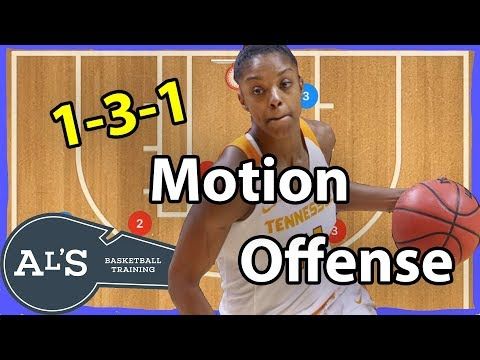 When your defense thinks that you can score on every touch,
it forces him into very uncomfortable positions. Attacking and constantly putting
pressure on your defense will force him to break down over the course of a
game. It will destroy his help intentions, making additional opportunities for
your teammates, and have a negative impact on his offense.
When your defense thinks that you can score on every touch,
it forces him into very uncomfortable positions. Attacking and constantly putting
pressure on your defense will force him to break down over the course of a
game. It will destroy his help intentions, making additional opportunities for
your teammates, and have a negative impact on his offense.
Shoot, Shoot, Shoot means every time you catch the ball, it
immediately goes into shooting position. The ball goes right into your shooting
pocket, your knees are bent and you are in an athletic position. Shoot, Shoot,
Shoot means every time you catch the ball, you face the basket. It sounds
elementary (of course you face the basket!) but how many times have you seen
players turn their back to the basket? How many times do you see players face the
corner or the top, cutting off large portions of the court from their vision?
Shoot, Shoot, Shoot means every time you catch the ball,
your eyes go to the rim.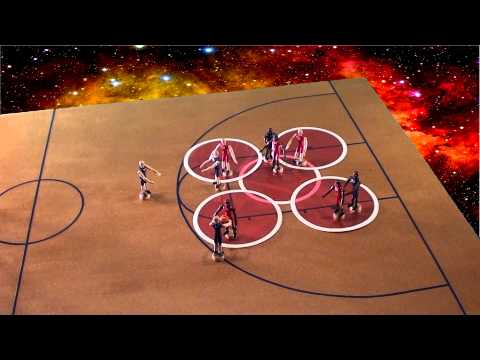 By looking at the rim, from any position, allows you
to see everything that happens on the floor.
By looking at the rim, from any position, allows you
to see everything that happens on the floor.
Shoot, Shoot, Shoot means every time you catch the ball,
your feet get in position and your footwork improves. You get quicker because
you are in better position. Your pivoting violations (like traveling) go away
because your feet have more of a purpose.
Lastly, shooting is a skill that can't be a second
thought. You might be able to
recover FROM a shot, but YOU CANNOT RECOVER TO A SHOT. You can think shot and recover to a pass, you can think shot
and recover to a dribble, but you can't go the other way. How many times do you
see a player get a pass in the corner and start looking for someone to pass to?
Everyone on his team, every one in the stands starts yelling, "Shoot, Shoot!"
While he is looking for some one to pass to, he didn't notice that he is wide
open. Eventually, he gets around to shooting the ball and it NEVER goes in. That is because you can't recover TO a shot.
That is because you can't recover TO a shot.
So, every time you catch the ball, your first thought is
SHOT, your second thought is SHOT and your third thought is SHOT! Now that is
really a triple threat.
Addendum by Joe Haefner
When you first read the "Shoot. Shoot. Shoot." mentality, you might think it sounds a bit crazy. I know that I did.
But after I saw Don teach it and incorporate it, I thought it was genius.
After using it for over a decade, I would not teach any other way now. My player's are just better. They're more confident and more assertive.
This is an example of how you can introduce it to your players and it also helps clear up some misunderstandings if you have any:
After introducing the new triple threat, you can ask them, "What happens to your feet when you think shot?"
After a few player responses, you can say, "Yeah. You aggressively face the basket. You turn as fast as you can under control."
You aggressively face the basket. You turn as fast as you can under control."
After that, you can ask "Now, why is this important?"
This is usually where you might lose them. If you're lucky, you might have a few bright players that figure it out. So if they don't answer in a 5 seconds, you can say to them, "If you turn slowly, it allows the defense to get set and you lose your initial advantage."
"If you aggressively turn and face the basket like you're going to shoot the ball, it puts pressure on the defense. If they do NOT sprint out to defend and it is a good shot for you, you can shoot the ball."
"Now by thinking 'Shot. Shot. Shot' and getting into your shooting position as quickly as possible, the defense has to cover more ground to contest your shot. Now the defense has to rush out and defend you. If the defense is flying at you at a fast speed, you have the advantage because their momentum is coming towards you and it will make it difficult for them to guard the drive.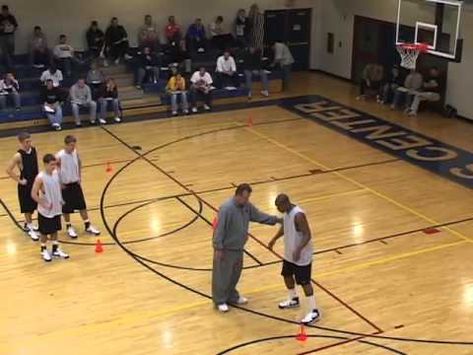 "
"
Next, I'll ask them, "If you Think Shot, what happens to your eyes?"
Most groups usually get this one right away, "Your eyes are looking at the hoop."
"Yes. And when they're looking at the hoop, this does a couple of things for you. Eyes are one of the greatest weapons for fakes and the defense might jump and create a driving or passing lane for you."
"Two, if your eyes are up, you can see what?"
"Yeah. You can see the whole floor. You can see the defense. You can see your teammates."
"Now should you still think 'Shot. Shot. Shot' if you are outside of your shooting range?"
"Absolutely! Even if you would never shoot the ball because it is a poor shot for you, just by looking like you are going to shoot the ball will put more pressure on the defense and pull them out of position. Defenders instinctually will fly out of position if you look like you're going to shoot the ball even if you're a terrible shooter from that spot.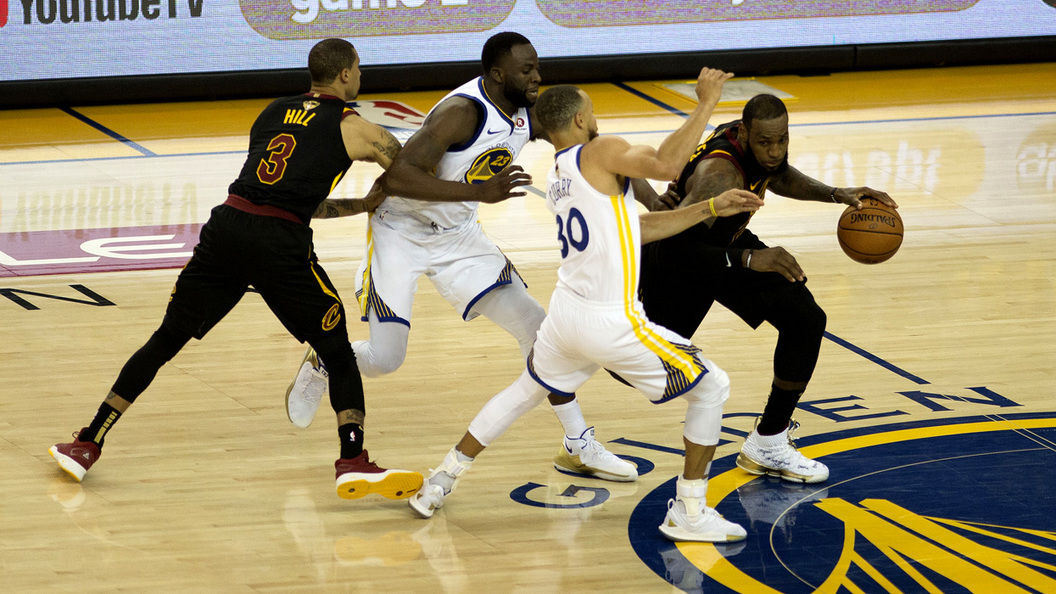 "
"
As you can see, this mentality can be a great tool to instantly make your team better at offense.
How to Use the Dribble
The most overused, needlessly exercised and mismanaged skill
in basketball is the dribble. It has become something to do while you have the
ball. It doesn't need to have a purpose; it doesn't need to have a direction.
Just catch it and put it on the floor. That is why the American game has become
so ugly and why our kids don't have a firm concept of quality offense.
I believe the purpose for putting the ball on the floor is
to get closer to the basket. Just like the "Shoot, Shoot Shoot," mentality that
helps you be aggressive on the catch, when you put the ball on the floor you
should think one thought, "LAYUP!"
By thinking lay-up, your dribble becomes aggressive and
purposeful. Never do in 2 dribbles what you can do in 1. When you put the ball
on the floor, your dribble should be long, hard and to the basket. Separation
from your defense is accomplished with the ball and if you can't separate with
the first dribble you won't separate at all. Your line should be straight at
the basket. Getting your defense to step backward is key to any offensive move.
When you put the ball
on the floor, your dribble should be long, hard and to the basket. Separation
from your defense is accomplished with the ball and if you can't separate with
the first dribble you won't separate at all. Your line should be straight at
the basket. Getting your defense to step backward is key to any offensive move.
And, just like shooting, you can't recover to a shot. How
many turnovers have you seen created because your player goes on the dribble,
looks to pass, and the defender plays the pass? If it is not a turnover it
becomes an off balance, poor attempt at the basket. If your player intended to
take a lay-up and the lay-up is defended, he can always pass off. However, it
doesn't work the other way.
Improve Quickness by Playing the Angles
The shortest distance between two points is a straight line.
If you can get your footwork to go in a straight line to the basket, your
player instantly become quicker, due to more efficient footwork, faster
(definition of speed is mass/distance) and more aggressive. The more he
deviates from a straight line, the more of an advantage the defense gains. If
"North" and "South" indicate direct lines to the basket, then it stands to
reason that any time you make an "East – West" move, you should recapture
"North – South" as quickly as possible. That is a very obvious concept in
football. A running back runs parallel to the line of scrimmage looking for a
hole. Once he finds the hole, he turns his shoulders and hips up the field and
goes. In other words, if you make a crossover move, get pointed directly back
to the front of the rim as quickly as possible.
The more he
deviates from a straight line, the more of an advantage the defense gains. If
"North" and "South" indicate direct lines to the basket, then it stands to
reason that any time you make an "East – West" move, you should recapture
"North – South" as quickly as possible. That is a very obvious concept in
football. A running back runs parallel to the line of scrimmage looking for a
hole. Once he finds the hole, he turns his shoulders and hips up the field and
goes. In other words, if you make a crossover move, get pointed directly back
to the front of the rim as quickly as possible.
Teaching players that you beat the defense with your feet
and you separate with the ball will help keep your dribble efficient and
effective.
Get the Ball Where You Can Score
Putting yourself in position to score means starting and
finishing your move to get the ball in your range.![]() Whether you V cut, L cut,
come off a screen, etc., you have to receive the ball in a scoring area. Players
must mentally condition themselves that they are working to get the ball in
their scoring area, not just get the ball. By getting the ball in your scoring
area you immediately put your defense at risk. He must now react to what you
do. If you are aggressive, he will always be a count behind your move.
Whether you V cut, L cut,
come off a screen, etc., you have to receive the ball in a scoring area. Players
must mentally condition themselves that they are working to get the ball in
their scoring area, not just get the ball. By getting the ball in your scoring
area you immediately put your defense at risk. He must now react to what you
do. If you are aggressive, he will always be a count behind your move.
On your catch think "Shot!" If his hands are down, if he has
stepped off and you are in your range, let it go. The next time you get the
ball, think "Shot!" If your defense is not sensitized to your shot, he will
step up, play a little more upright to stop your shot (if not, let it go
again). As he comes up, put the ball on the floor think, "Lay-up!" and beat him
straight line to the basket.
The effectiveness of any basketball move starts and ends with
the immediate possibility of a score. If you are not in a position to score or
don't have the mentality that makes you strong and aggressive, any offensive
moves will not create what you want.
If you are not in a position to score or
don't have the mentality that makes you strong and aggressive, any offensive
moves will not create what you want.
The Secret to Shot Fakes
A shot fake is a shot not taken. Everything is the same as a
shot, the ball is in your shooting pocket, your body is in a shooting crouch,
and you are square and facing the basket. You just don't let it go. Shot fakes
are very effective in the realm of individual offense. One of the aspects of
effective offense is controlling the defense, putting the defense at risk and
forcing it to react to your offense. Within your "Shot, Shot, Shot" mentality,
shot fakes do a great job of forcing the defense to play in an uncertain manner
and as a reactor, thereby putting the defender a step behind the offense. This
is another reason why whenever you catch the ball, it immediately goes into
shooting position.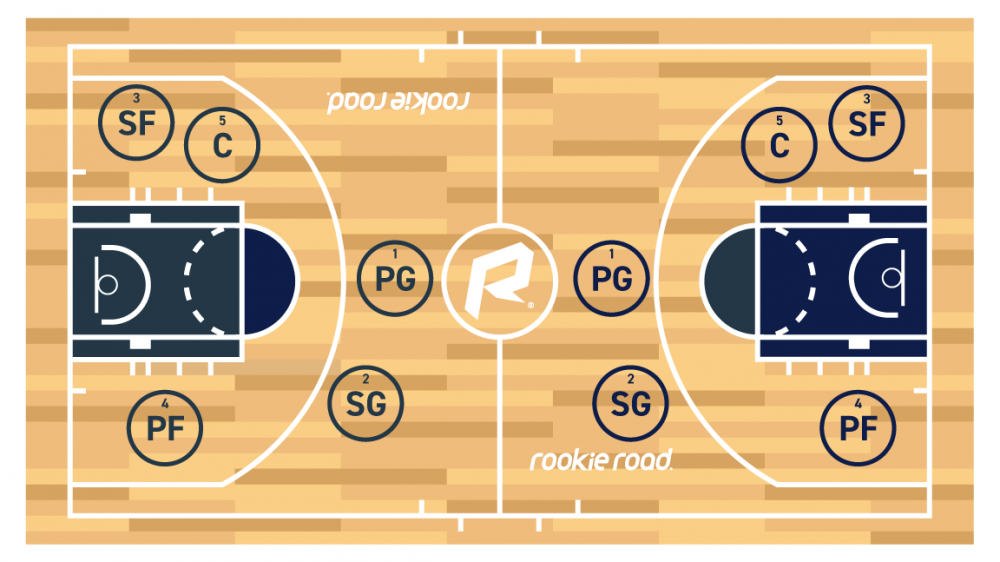 When you are a threat to score, and do it immediately on the
catch, your defense must play the shot right away leaves him vulnerable to
anything else that you throw at him.
When you are a threat to score, and do it immediately on the
catch, your defense must play the shot right away leaves him vulnerable to
anything else that you throw at him.
This is not to be confused with a pump fake. I am not a fan
of pump fakes. First, I don't believe that you can fool a defense (at least a
good one). Unless your pump is exactly the same as your shot, in form and
rhythm, the defense is not going to bite. But more importantly, a pump fake
takes you out of your good shooting position. As you move the ball and your
body through the pump fake, you add moving parts to your shot that will hurt
its consistency. It also forces you to take more time, due to the recovery from
the pump, to get your shot off. These things will have a negative effect the quality
of your attempt.
I have found it much more effective to sell your defender
that you will shoot if he gives you the chance and then let him try to adjust
to stopping your shot.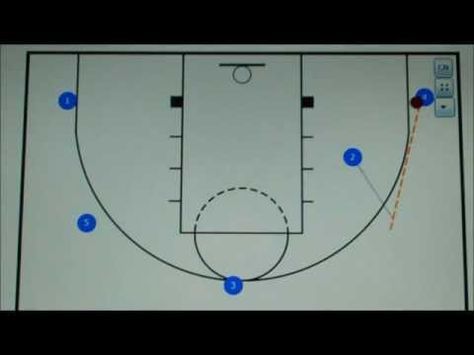 This, again, is done by your "Shot, Shot, Shot"
mentality and the appropriate attack when you get the ball.
This, again, is done by your "Shot, Shot, Shot"
mentality and the appropriate attack when you get the ball.
Individual Offense Drills
- Pivot Shooting
- Wing One-on-One
- Top One-on-One
More Basketball Drills
Coaches, go here for more Basketball Drills
Players, go here for more Basketball Drills
Recommended Videos & eBook:
|
|
The Attack & Counter Skill Development System
This eBook & DVDs will improve your shooting, ballhandling, footwork, perimeter moves, post moves, finishing, aggressiveness, quickness, confidence, mentality, and your all-around game!
Designed by NBA skills coach Don Kelbick, this unique and comprehensive system is incredibly simple when compared to other skill development programs.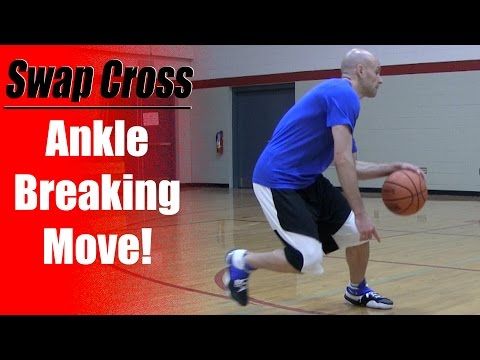 Yet it works with NBA and pro players at the highest level... (more info) Yet it works with NBA and pro players at the highest level... (more info)
|
What do you think? Let us know by leaving your comments, suggestions, and questions...
10 exercises for developing attacking skills of basketball players
Hello, dear visitors of basketball-training.org.ua! Today I want to tell you about a few basic exercises, by regularly performing which you can reach the next level, becoming a really good attacking player.
Yes, many articles have already been written about this and many videos have been shot. Yes, we all know a few dozen exercises that promise to make you at least the next Michael Jordan. I will not reinvent the wheel, but will tell you about a series of exercises that just a year ago helped me a lot to improve in the attacking aspects of the game. Let's start the story.
Basketball drills
Mikan Drill
This drill gets its name from the first really big guy in the NBA, George Mikan.![]() Begin to perform the exercise, located on the right side of the basketball basket (a meter and a half from the ring). Take two steps to the left, parallel to the endline, and throw a half hook on the other side of the hoop using your left hand. Without letting the ball fall to the ground, pick it up and take 2 steps to the right (again parallel to the base line) and again throw the ball into the ring with a half hook using your right hand. Try to get into the rhythm and hit 10-20 in a row.
Begin to perform the exercise, located on the right side of the basketball basket (a meter and a half from the ring). Take two steps to the left, parallel to the endline, and throw a half hook on the other side of the hoop using your left hand. Without letting the ball fall to the ground, pick it up and take 2 steps to the right (again parallel to the base line) and again throw the ball into the ring with a half hook using your right hand. Try to get into the rhythm and hit 10-20 in a row.
[youtube]CmFOj0nhUN8[/youtube]
This exercise will teach you how to attack with a weak hand and turn it into a formidable weapon. Personally, while doing this exercise, already on the second day I began to complete the passages with my left hand. And after a couple of weeks, the effectiveness of the attacks doubled: now the defender had to hold both sides, and I could always attack with the hand farthest from him.
Superman Drill
This exercise is very similar to the previous one.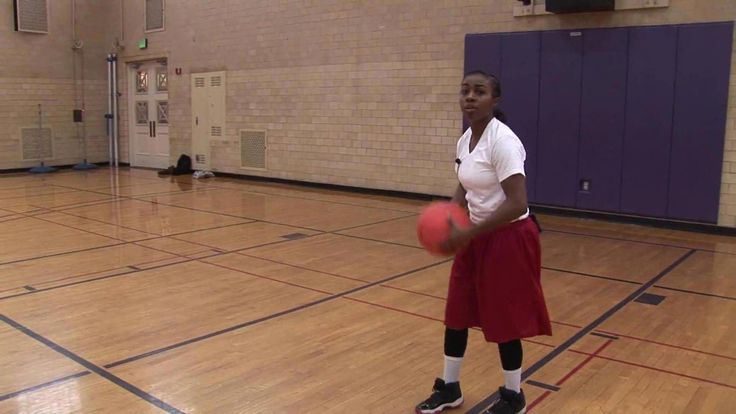 Position yourself almost on the border of the three-second zone (you always want to call it a “trapeze”, but with the change in the rules of basketball, it has lost its usual shape). We perform a throw on the ring with one single difference: do not try to hit the ring! On the contrary, raise the trajectory higher so that the ball, bouncing off the backboard, falls on the other side of the ring. This is where you need to catch him, not allowing him to fall to the floor. Important: try to take no more than three steps to overcome the distance from one side of the ring to the other. Follow the rhythm: let the entire exercise be performed in the same rhythm. Do 10 to 20 repetitions of this exercise.
Position yourself almost on the border of the three-second zone (you always want to call it a “trapeze”, but with the change in the rules of basketball, it has lost its usual shape). We perform a throw on the ring with one single difference: do not try to hit the ring! On the contrary, raise the trajectory higher so that the ball, bouncing off the backboard, falls on the other side of the ring. This is where you need to catch him, not allowing him to fall to the floor. Important: try to take no more than three steps to overcome the distance from one side of the ring to the other. Follow the rhythm: let the entire exercise be performed in the same rhythm. Do 10 to 20 repetitions of this exercise.
[youtube]T2Jo-2ME-z4[/youtube]
Beat the Pro
Imagine that you are playing 1 on 1 against your favorite player. You just need to beat him by being the first to score 21 points. Perform game throws (with deviation, after strides, after crossovers and sudden stops).![]() Be clear about your opponent, how he defends against you, how he tries to cover your every throw, how he waits for the slightest mistake in order to intercept. For each roll you make, you get 1 point. For each miss, the opponent receives 2 points. When you reach 20 points (if you haven't lost before) - you need to make a "buzzer beater" and it needs to be scored. How will you do it: with an incredible deflection after a fabulous dribbling or just hitting the ball with 9meters. Try to beat the best players in your imagination. Important: be realistic when playing against Shaquille, it is foolish to push him with your back or try to shoot the ball while in close contact. Also, it would be wrong to try to overtake Rose or Jordan. In general: adequately evaluate the opponent and try to complicate your life as much as possible.
Be clear about your opponent, how he defends against you, how he tries to cover your every throw, how he waits for the slightest mistake in order to intercept. For each roll you make, you get 1 point. For each miss, the opponent receives 2 points. When you reach 20 points (if you haven't lost before) - you need to make a "buzzer beater" and it needs to be scored. How will you do it: with an incredible deflection after a fabulous dribbling or just hitting the ball with 9meters. Try to beat the best players in your imagination. Important: be realistic when playing against Shaquille, it is foolish to push him with your back or try to shoot the ball while in close contact. Also, it would be wrong to try to overtake Rose or Jordan. In general: adequately evaluate the opponent and try to complicate your life as much as possible.
Shoot the Shot
Do you remember the good old game "Around the World"? Sometimes it is called "Points", but that's not the point. Now we will try to add a hit percentage to this game. Also, we will add a couple of new points to it, the so-called "elbow spot".
Now we will try to add a hit percentage to this game. Also, we will add a couple of new points to it, the so-called "elbow spot".
In order to advance to the next point, you must make at least 3 out of 5 rolls. Naturally, if the level of your game (and especially your sniping skills) allows you to regularly shoot with a percentage higher than 60%, then increase the number of goals scored to 4 out of 5 from each point. Or up to 5 out of 5 from medium and 4 out of 5 from long range. Total: you have 18 points, 90 throws of which at least 54 must reach the goal. Challenge accepted?
Ball slaps and squeeze
Throw the ball up as if it had bounced off the ring after a bad throw. Jump up, grab the rebound and squeeze the ball as hard as you can with your hands. Imagine that you had difficulty getting this rebound and now they are trying to knock it out from you. Immediately after the rebound, rotate the ball around the body (at different heights): around the head, back, knees and calves. Repeat this exercise 10-20 times.
Repeat this exercise 10-20 times.
Figure 8's - with dribble and without dribble
Eight, the famous eight is back, now with dribbling. Do you remember how Petya Maravich taught us how to handle the ball? So, now we are doing the same thing, but using dribbling. For those who find it difficult to perform such dribbling - try to perform the exercise without it.
[youtube]DYAQoOxuskg[/youtube]
Quick hands
This is a cool exercise that is sure to be performed at every training session for young basketball players. Starting position: one hand in front, the second - behind, the ball is between the legs. After releasing the ball, you need to change the location of the hands: if the right one was in front and the left one was behind, then now the ball needs to be grabbed with the right one from behind, and the left one in front. Diversify the exercise: both hands in front, the ball between the legs. We release the ball and catch it with our hands, but from behind. Important: regular performance of this exercise will allow you to develop hand speed, which is very important for performing high-quality and fast feints.
Important: regular performance of this exercise will allow you to develop hand speed, which is very important for performing high-quality and fast feints.
How to do it: 30 seconds first option, 30 seconds second option. Write down how many times you managed to do the first time, and then compare with the results after a week.
[youtube]TGh81tj6zbU[/youtube]
Tom-Tom dribble
This movement is also familiar to many of us. Stand with your legs slightly apart so that you can easily transfer the ball between them. We start with the right hand. We transfer the ball in front of us from the right hand to the left; then from the left hand, transfer under the foot to the right hand. Now with the right hand we transfer the ball behind the back - it turns out to be in the left hand and we send it back (also behind the back) to the right. This is 1 repetition. Repeat 10 times and change hands (i.e. mirror).
Drum dribble
The point is to learn how to quickly and comfortably change the pace of dribbling and its pitch.![]() For example, right after a screen or a run, you may find yourself kicking the ball out from behind (even though you already think your opponent is offside). The most elementary countermeasure is to sharply reduce the height of the dribbling. So, the exercise is that you need to knock the ball on the floor alternately with your right and left hand. Start from a normal static position (legs and back straight) and go down, increasing the intensity of the knocks on the floor. As soon as there is a space between your hands and the floor, a little more than a ball, begin to rise up. Make several series (for example, 5). For advanced players, try this exercise without looking at the ball, or by hitting it with 1 finger of your right hand and 1 finger of your left hand.
For example, right after a screen or a run, you may find yourself kicking the ball out from behind (even though you already think your opponent is offside). The most elementary countermeasure is to sharply reduce the height of the dribbling. So, the exercise is that you need to knock the ball on the floor alternately with your right and left hand. Start from a normal static position (legs and back straight) and go down, increasing the intensity of the knocks on the floor. As soon as there is a space between your hands and the floor, a little more than a ball, begin to rise up. Make several series (for example, 5). For advanced players, try this exercise without looking at the ball, or by hitting it with 1 finger of your right hand and 1 finger of your left hand.
Summary
Here is a set of exercises I suggest you do every time you enter the court. Believe me, the results will shock you! Of course, if you are a professional player, then these exercises will be familiar to you and will be given easily. However, who, if not you, should know about their usefulness. Join our VKontakte group: https://vk.com/uroki_basketbola - there are a lot of useful and interesting things.
However, who, if not you, should know about their usefulness. Join our VKontakte group: https://vk.com/uroki_basketbola - there are a lot of useful and interesting things.
And this is the end of the article, I wish you successful training and look forward to visiting this site!
Playing defense in basketball
Hello, dear visitors of the site basketball-training.org.ua ! Today I want to share with you my observations and conclusions, which I received as a result of 's desire to improve his game in defense of .
It so happened that the first few years of playing basketball (mostly on the street courts) my defense game consisted of constantly trying to cover the opponent's shot. Sometimes it worked, sometimes it didn’t work very well (I ended up either on the opponent’s back or on his head). It's a hell of a defense. A couple of years ago, I reconsidered my vision of playing defense, which I want to share with you.
Defensive Tips for
Basketball Players The first video that gave any indication of developing a basketball player's defensive skills was 's three-minute performance of Bruce Bowen's TNT Fundamentals series.![]() Then there was a short article on how to play defense against A. Gomelsky. Well, the last, but probably the most important training video was the company's products Better Basketball - Better 1 on 1 Defense . Even after skipping over half of what was said (some because of the language barrier, something because of banal restlessness) and putting even less into practice, I became much better at defending myself.
Then there was a short article on how to play defense against A. Gomelsky. Well, the last, but probably the most important training video was the company's products Better Basketball - Better 1 on 1 Defense . Even after skipping over half of what was said (some because of the language barrier, something because of banal restlessness) and putting even less into practice, I became much better at defending myself.
By the way, in this article everything will be exclusively about personal protection (and not a word about zone protection, although it is also worth writing about). So, I highlight the following stages of defense in basketball:
Stage 1: Defense against a player without the ball.
The essence of defense is to prevent the opponent from getting the ball . This is probably one of the most difficult stages, but also one of the most effective. Agree, it is difficult to attack without having the ball.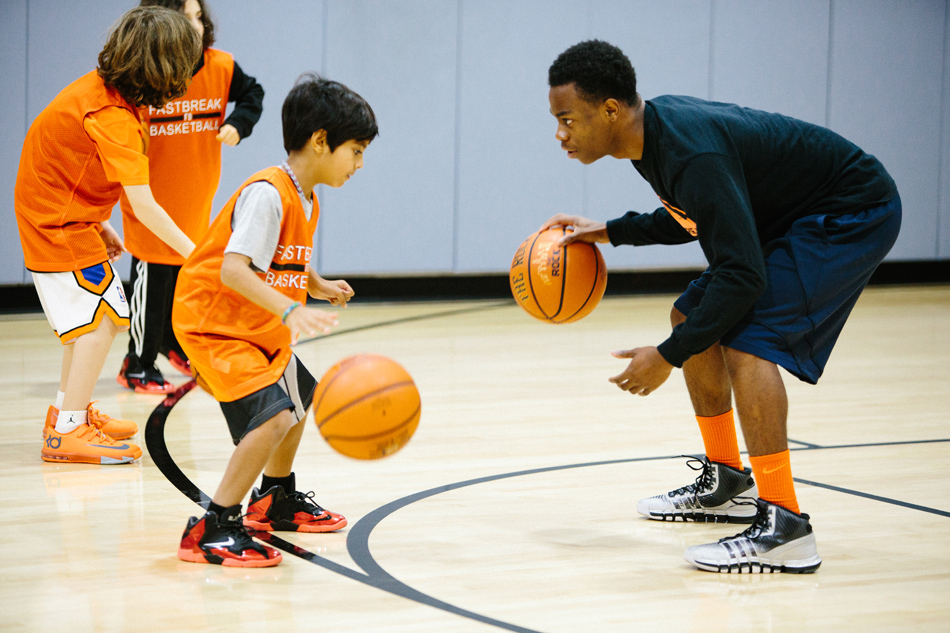 So, this stage of defense is incredibly difficult, because you have to give a lot of strength, not to be fooled by movements of the body, head and legs. A good result of such a defense is that the player does not receive the ball throughout the attack. Also a good result if the ball is received, but: in an awkward position (far from the ring; in the corner of the court) or in the last seconds of the attack. Shitty result - the ball is received quickly and conveniently.
So, this stage of defense is incredibly difficult, because you have to give a lot of strength, not to be fooled by movements of the body, head and legs. A good result of such a defense is that the player does not receive the ball throughout the attack. Also a good result if the ball is received, but: in an awkward position (far from the ring; in the corner of the court) or in the last seconds of the attack. Shitty result - the ball is received quickly and conveniently.
Stage 2: Defense against the player who received the ball.
When a player receives the ball, he is in the classic "triple threat position". This means that he can shoot the ring, pass or start the dribble. This means that we will have to confront all three threats at the same time. So, the best option is to take a position that will minimize the range of movement of the enemy. First of all, close its strong side from the passage by sitting a little to the side of it. As an option - from the side of his supporting leg; those.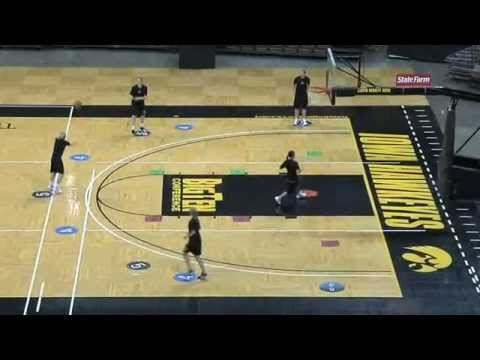 You will know the direction of his movement (he will not step with his supporting foot).
You will know the direction of his movement (he will not step with his supporting foot).
Let's conditionally divide the opponent's body into 2 levels: the first zone - to the waist; the second zone is above the belt. So, in order to start dribbling, the ball must be in the first zone. Both zones are suitable for a pass, and for a throw, the ball must go from the first zone to the second. I hope it's clear for now. So, one hand is playing with the bottom zone (preventing dribbling and low passing), the second is defending against a shot and a pass from the upper zone. Remember about the legs: with bent legs it is much easier and faster to make a jerk. If the legs are straight, then for a jerk they must first be bent.
And one more piece of advice: pull the player all the time with your movements. Let the probability that these "ritual dances" help to knock out the ball will be small, but you will be able to knock the opponent out of his usual rhythm. And it's worth a lot!
Excellent defense: the ball is knocked out. Good defense - loss on pass, inaccurate pass, throw from an uncomfortable position.
Good defense - loss on pass, inaccurate pass, throw from an uncomfortable position.
Stage 3: Defense against the dribbler.
Assume that previous attempts to get possession of the ball failed and the opponent began to dribble. How to defend yourself then?
Let's not consider those situations in which the opponent is obviously weaker than you. It's just not interesting. The opponent is stronger, faster and jumpier than you - that's a good situation. Like I said, close his strong side. But if you don't know its strengths and weaknesses; you don’t know how to hold: from a throw or from a pass - that is, a good solution. We are trying to make sure that you are the leader. One side is obviously closed - and the player is deliberately skipped to the other. So you can not lose in the starting jerk and not guess the direction of movement: it can only go in one direction. Try to push the opponent with the ball to the end line, from where he can no longer comfortably attack the basket.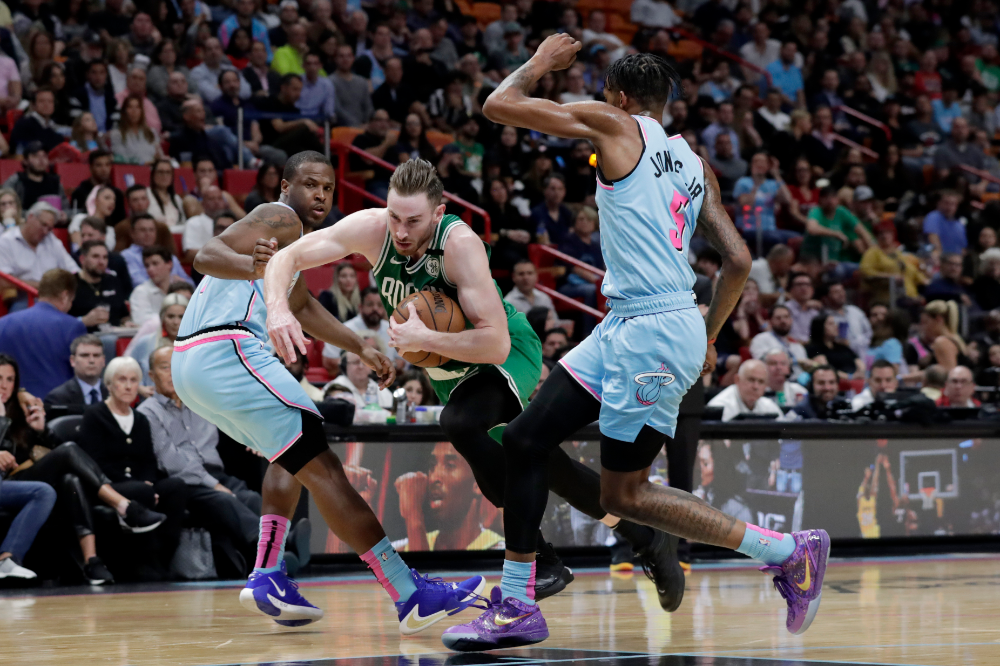 Clamp into a corner, press to the line.
Clamp into a corner, press to the line.
Again: Close one side tightly. Better - if it will be his forte; if you don’t know which one is strong, close your weak side and let defenses under your strong side. And a safety net: sometimes it's better not to let a player throw from an average distance. Allowing him to get under the ring. After all, there will be a safety net in the form of a “big”, which cannot be thrown so easily.
Stage 4: Maintenance completed.
It can be a double step and a throw, a simple throw after a stop, a jump, a pivot (turn), a series of displays, etc. Let's take a closer look at this.
Double step. Remember: he has 2 steps to complete the attack, and you have 2 steps to hit the ball down, and then another full step to block. I recommend doing this:
- A series of small touches to the ball during a double step (as if you were playing a drum). Thus, you will not knock out the ball, but you will disorientate it accurately.
 Yes, and in order to keep the ball, you have to make more.
Yes, and in order to keep the ball, you have to make more. - Trying to hit the ball from below! When hitting from above, there is a very high chance that you will hit your fingers - this is a foul. But from below: few people expect such a blow, few people close the ball from below. And taking the ball up for a throw, he will receive an additional impulse, the push of the ball - throwing it as it was previously thought would not be so easy.
A little tip: after picking up the ball by the opponent, very often the ball goes down, and this is done strongly and abruptly. Just substitute okay from below at the level of the opponent's lower back: he himself will knock the ball against your hand. This is a very cool and often unexpected trick for the opponent.
- If it was a jump stop, or just a stop, then you need to get as close as possible and raise both hands vertically up. Now you can not be afraid of a foul.
Stage 5: Jump Shot.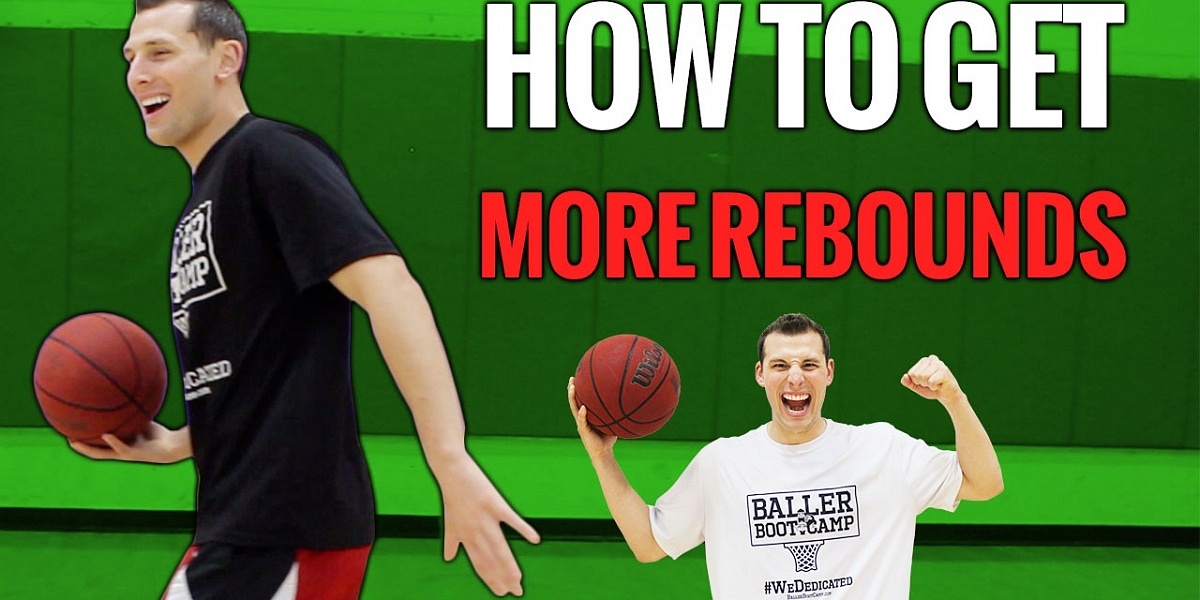
It's good if you jump high and sharp - then try to block at the moment when the ball leaves the thrower's hand. You can just try to brush it off at the moment when the supporting hand is no longer involved in the throw, and the ball is on the wrist. I will not talk about how to block-shot, this is a topic for a separate article.
Remember that you can block the thrower's view with your hand: just don't poke it in the eyes, just bring it closer to the thrower's face. A good way (if you have not already jumped out for a block shot, and the throw is being made) is to simulate contact with various organs of the opponent (guys, you understand what I mean). Belly, solar plexus, groin - all this interferes with concentration at the time of the throw. Well, and often on street sites there is a clap of hands: at games they can give a foul, but on the street it can bring down that very concentration.
And finally, I suggest watching the old film , about the individual protection of basketball players, filmed in the USSR.